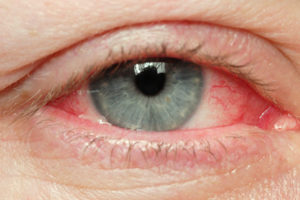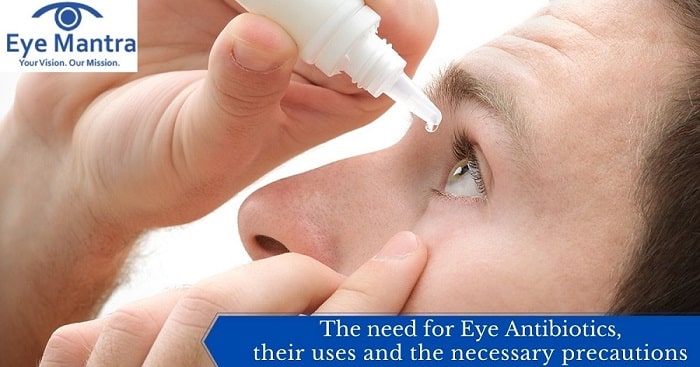The use of eye antibiotics has been very common these days. But it’s important to know that when, and how to use those antibiotics.
Just imagine your life without vision or impaired vision, for that matter. No one in the world wants to live his or her life that way. Eyes are the most vital part of the body, and it definitely needs to be taken care off. Well, it’s not necessary that anything quite visual and apparent to you can do the harm only. There are certain things around you or in your surroundings that might result in a problem for you. The same goes for your eyes as well. Yes, there are certain bacteria, viruses, fungi that lead you to eye infections for the cure of which you will be required of proper eye antibiotics according to the need.
Contents
What Are Eye Infections?
These are the ailments that can range from severe to mild. The mild ones can be treated at home whereas the severe ones might even result in sight-threatening and a proper medication could be the requirement. Doctors prescribe eye antibiotics for the treatment of eye infections.

Causes Of Eye Infections
Bacterial Conjunctivitis
It is one of the most common causes of eye infections which is prominently seen in children in daycare and school, including adults. Conjunctivitis, often called pink eye is caused when the conjunctiva (the clear tissue that covers the white part of your eye and the inside of your eyelids) is hit by an infection or allergies. This can occur in one or both eyes at the same point in time. The disease is contagious as well.
Eye Infections Related To Contact-Lens
Contact lenses have come into wider use to most of you all these days, be it out of necessity or fashion. Whatever it might be. With every growing technology and development, you need to be extra careful and cautious while using them because everything has its pros and cons.
The same is followed by contact lenses. If they are not removed within the required period, or if you may sleep with the lenses on your eyes, they are surely going to cause pain to your senses. Also, wearing contaminated or dirty contact lenses could lead you to the same.
Symptoms Of Eye Infections
Is your eye, or are your eyes going through an infection?
Well, this can finally be decided by your doctor. But yeah, there are certain signs by which you can decide whether it’s an infection or not. The symptoms that you have an eye infection can be divided into certain categories. They can be how your eyes feel, how do they look like, or how well is your sight.
How your eye feels: Suffering from infections, they might be itchy, painful, and discomforting. There could be heaviness, burning sensation as well.
How your eye looks: Swollen eyes with yellow, green, or clear eye discharge could be noticed. Your eyes might look red, mostly the white area looks so. Also, in the morning the eyes might have crusty lashes and lids.
How well is your vision: You may experience a faded and blurry vision.
What Are Eye Antibiotics?
Basically, eye antibiotics are the medications used by professionals for the treatment or prevention of bacterial eye infections. Their work is to kill bacteria, those small microscopic organisms that enter your eyes and are the cause of infections, and also that might lead to further troubles.
Once you are aware of the infections, the causes, and the symptoms, you need to make yourself understand that the particular eye infection you are suffering from needs and an eye antibiotic or not. Because there is a huge delusion among the people out there that all types of eye infections can be treated with the use of eye antibiotics. But it is not at all true.
For example, in the case of conjunctivitis, viral and allergic conjunctivitis cannot be treated with the help of those very medications. They would need some other form of treatment. Whereas in the case of bacterial conjunctivitis, the most preferable advice by the doctors has been the eye antibiotics. So before using them straight away, you need to find out what kind of infection you are suffering through.
When To Go For Eye Antibiotics?
Well, this is again the matter to be looked into carefully. Because the use of eye antibiotics has been the most common approach by doctors in the past. And this has caused a lot of issues because of the condition what you can call antibiotic resistance. The overuse of drugs and antibiotics has led to a situation where the bacteria in the infected eyes become resistant to the medications, or to the drugs. They remain there and continue to cause trouble.
Because of this practice of overuse of eye antibiotics, doctors generally try to avoid unnecessary use of it. Before prescribing any antibiotics, they opt to find out first if it is bacterial or something else. Only then do they ask you to go for it. Else, they would suggest you keep calm and let the infection heal on its own if the case is a mild one.
Cure For Bacterial Infection
For them, the most commonly and most frequently used antibiotics to treat bacterial pink eye, or bacterial conjunctivitis comes in the form of eye drops. However, according to recent research what type of eye antibiotic you are opting for, or what type of it your doctor might be prescribing is not what matters the most. Because they all result in the same effectiveness.

Here are some types of antibiotics your doctor may prescribe when you reach out to them:
Tobramycin: They come under the category of aminoglycoside antibiotic, and it is mainly used to treat Gram-negative bacterial infections. The classic dose recommended by doctors is the use of eyed drops every four hours for continuous give to seven days.
Ciprofloxacin: This falls into a bit wider category. What is meant is that it is able to treat both, Gram-positive and Gram-negative bacterial infections. This very eye antibiotic does not come in a form of eye drops, rather this comes in the form of a solution or an ointment. Talking of doses, it can be applied after every two hours until you see your infection clearing out. However, your doctor may provide you with some specific instructions.
Erythromycin: Again, this also comes into the form of a solution that is applied to the eyelids in a very minimal amount. Of course, after applying this there could a few minutes of vision blurring but that goes off very soon and you need not worry about that.
Ofloxacin: Now this eye antibiotic is an eye drop. It can be taken four or even more times during the day, but only in the affected eye.
Side Effects Of Eye Antibiotics
Everything comes with its own merits and demerits and so is the case here. These eye antibiotics used for bacterial conjunctivitis may have some side effects which be one or more of these:
- Irritation
- Redness
- Itching
- Burning
- Stinging
Now the symptoms mentioned above are the same as the symptoms noticed in the bacterial eye infection. So in order to know if the treatment or the eye antibiotic prescribed to you is working or not, you need to be a bit attentive. If the condition seems to worsen immediately after the use of antibiotics. Generally, it is advisable to stick to the treatment for at least two days and then consult the doctor.
In the end, it important to note down that you should not rely on prescriptions that are not really meant for you. People going through the same symptoms usually think that the disease they are going through is the same. This could lead you to serious troubles. Also, keep in mind to take the full course of the medication and you should not seize it without re-consulting the doctor.
[video_lightbox_youtube video_id=”GFIDsU6Aibs” width=”1200″ height=”800″ auto_thumb=”1″]
The best way to treat your eyes is to visit your eye care professional and get your eyes checked regularly. He will be able to assess the best method of treatment for your eye ailment. Visit our website Eyemantra. To book an appointment call at +91-8851044355. Or mail us at [email protected]. Our other services include Retina Surgery, Specs Removal, Cataract Surgery, and many more.
Related Articles :



